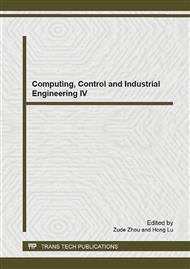p.92
p.96
p.100
p.104
p.107
p.111
p.115
p.121
p.127
Research on the Taxonomy of Activity Recognition Based on Inertial Sensors
Abstract:
This paper introduces some techniques on classifying human activities with inertial sensors and point out a number of characteristics of classification algorithm. The goal of human activity recognition is to automatically analyze ongoing activities from people who wear inertial sensor. Initially, we provide introduce information about the activity recognition, such as the way of acquisition, sensors used and the steps of activity recognition using machine learning algorithm. Next, we focus on the classification techniques together with a detailed taxonomy, and the classification techniques implemented and compared in this study are: Decision Tree Algorithm (DTA), Bayesian Decision Making (BDM), Support Vector Machines (SVM), Artificial Neural Networks (ANN) and Hidden Markov Model (HMM)[. Finally, we make a summarize about it investigate the directions for future research.
Info:
Periodical:
Pages:
107-110
Citation:
Online since:
October 2013
Authors:
Price:
Сopyright:
© 2013 Trans Tech Publications Ltd. All Rights Reserved
Share:
Citation:


